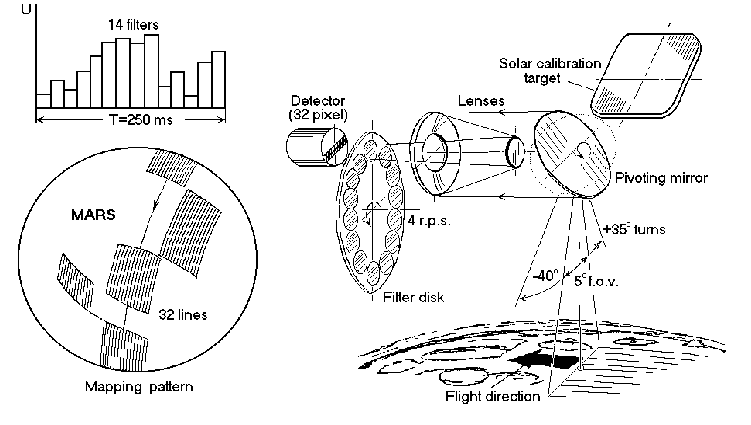| ROBOTIC SPACECRAFT MISSION TO MARS. Brief description |

|
Experiment: SVET
HIGH-RESOLUTION MAPPING SPECTROMETER STUDY OF THE MARTIAN SURFACE COMPOSITION AND ITS PHYSICAL PROPERTIES
Instrument has 14 spectral subbands in the 260-900 nm ( a detector: PMT) and 6 subbands in the near-infrared. The spectrophotometer maps the surface in 32 lines with the mean resolution ( about 0,3 km at the pericenter), and 1 low-resolution IR line ( 3km). The instrument has a turnable entrance mirror permitting observations of different areas of the planet. The observation tracks will pass over the planet surface approximately in meridional direction. Taking into account the variable along-track resolution, about 50 percent of the Martian surface can be mapped during one-year observations from the Martian orbit.
 Cooperation: Russia, USA
|